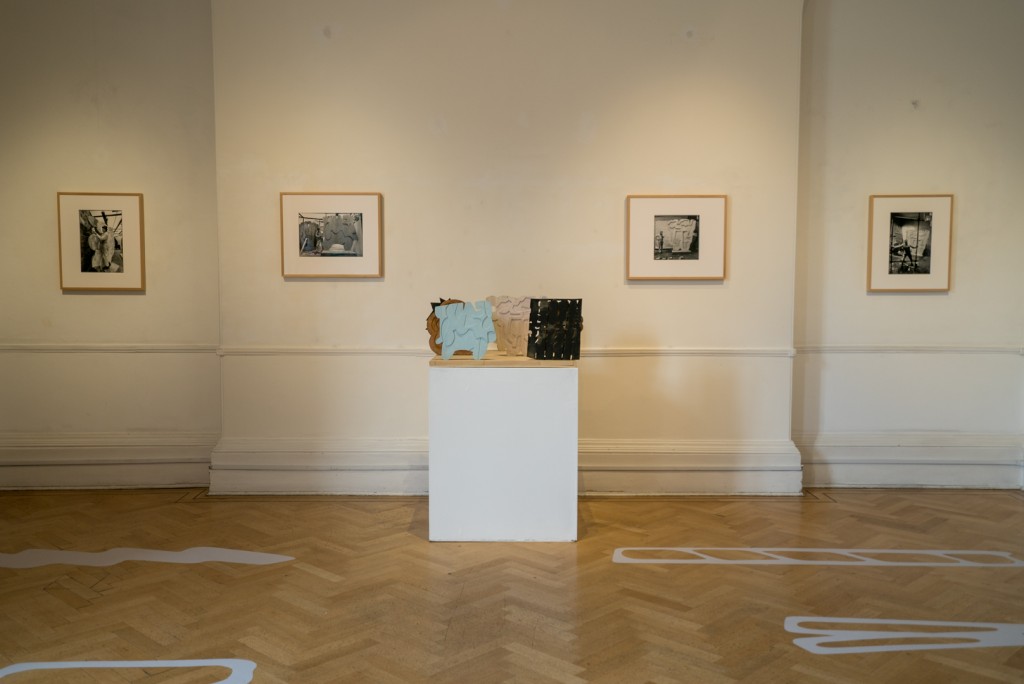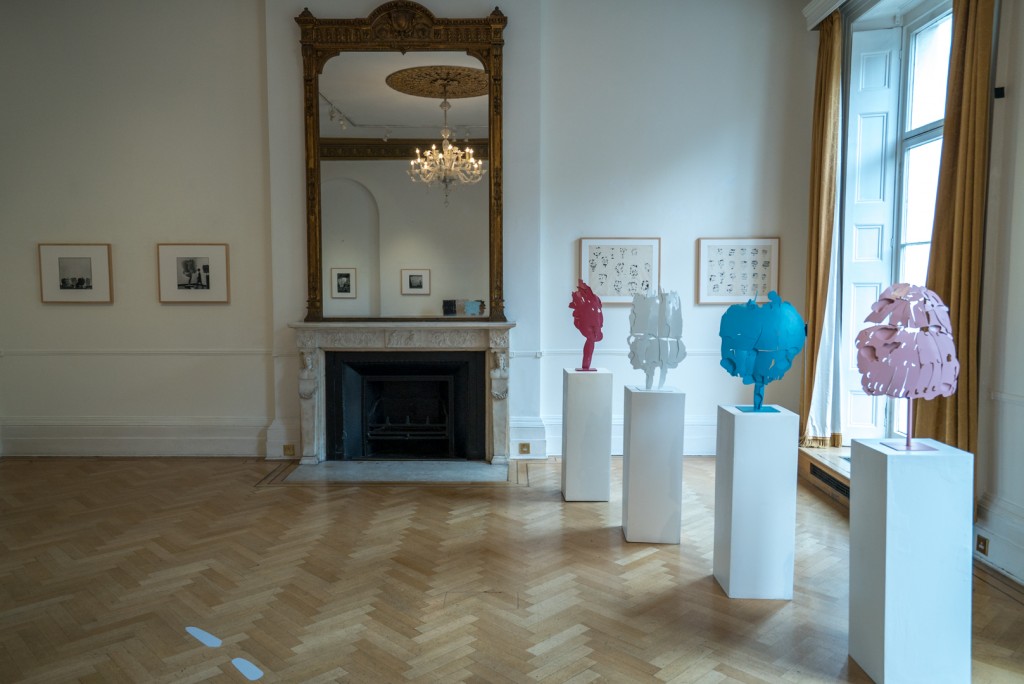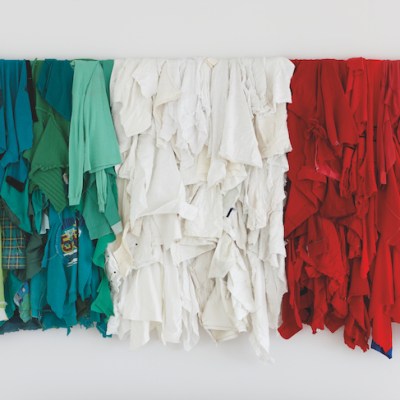Seven vinyl shapes on the floor of the Italian Cultural Institute denote the footprints of seven absent sculptures. They stand in for Pietro Consagra’s 1972 work for the Venice Biennale, Trama – a thicket of 3-metre-high coloured wooden forms designed not to be looked upon from a distance, but weaved between by visitors to the Italian Pavilion exhibition ‘Aspects of Italian Sculpture’. Forty-five years on in London, this new evocation of the piece is completed by a maquette and a series of photographs of Consagra producing the work and standing within it, taken by Ugo Mulas.
‘Ties|Legami. Pietro Consagra and Ugo Mulas’ at The Italian Cultural Institute

This flattened re-presentation of Consagra’s work immediately conveys him as both an artist who prized direct interaction between art and its audience, and a sculptor in two dimensions. These concerns are critical to Consagra’s collaboration with Mulas, whose photographs of Lucio Fontana with blade and Alberto Burri with flame have come to define our impression of artistic process in post-war Italy. Together Consagra and Mulas wrote Fotografare L’arte (Photographing Art) in 1973, in which the discussions move fluidly between the two media. Umberto Eco’s introduction to the book highlights how Mulas approached his work with sculptors differently from artists working with canvases. For the latter, he constructed the work’s history; when photographing sculpture Mulas sought to construct a space around it.
This tension between two and three dimensions, the immediate and the mediated, is particularly striking in the series Ferro trasparente produced by Consagra in 1966, which is also represented in the current exhibition. The sculptures themselves are practically flat, fundamentally frontal, and yet somehow diaphanous; a sense of translucency is created by the overlapping iron sheets, whose garish Pop art shades were also used by Fontana during this period. Their biomorphic forms are gently convex, a feature lost in photography, but crucial to our bodily understanding of their frontality when seen in person.
‘Ties|Legami. Pietro Consagra and Ugo Mulas’ at The Italian Cultural Institute

Following the production of the Ferri trasparenti, Consagra catalogued the (frontal) forms of 35 sculptures by drawing them in scratchy lines and inky blotches on two large sheets of paper. In this surprisingly easy connoisseurial Rorschach test, the flatness of the sculptures is amplified, and their diaphanous quality transferred to the void in which they float. They are no more grounded in sculptural reality than the technical preparatory drawing displayed nearby.
Four sculptures from this series are on display, presented like a chorus line. As in Trama, their overlaps and closeness are part of their cumulative effect. This is something Mulas monopolised on in his photographs of this series, taken in Consagra’s studio and displayed in 1966 at the Marlborough Gallery in Rome.
‘Ties|Legami. Pietro Consagra and Ugo Mulas’ at The Italian Cultural Institute

ARTUNER, who curated this exhibition, are arranging a follow-up in September showcasing contemporary artists whose work responds to Consagra. In our Instagram age, they also necessarily respond to Mulas. Sculpture made for the camera – and spatial qualities made in it – is far from a contemporary phenomenon.
‘Ties | Legami. Pietro Consagra & Ugo Mulas’ is at the Italian Cultural Institute until 8 September 2017.



